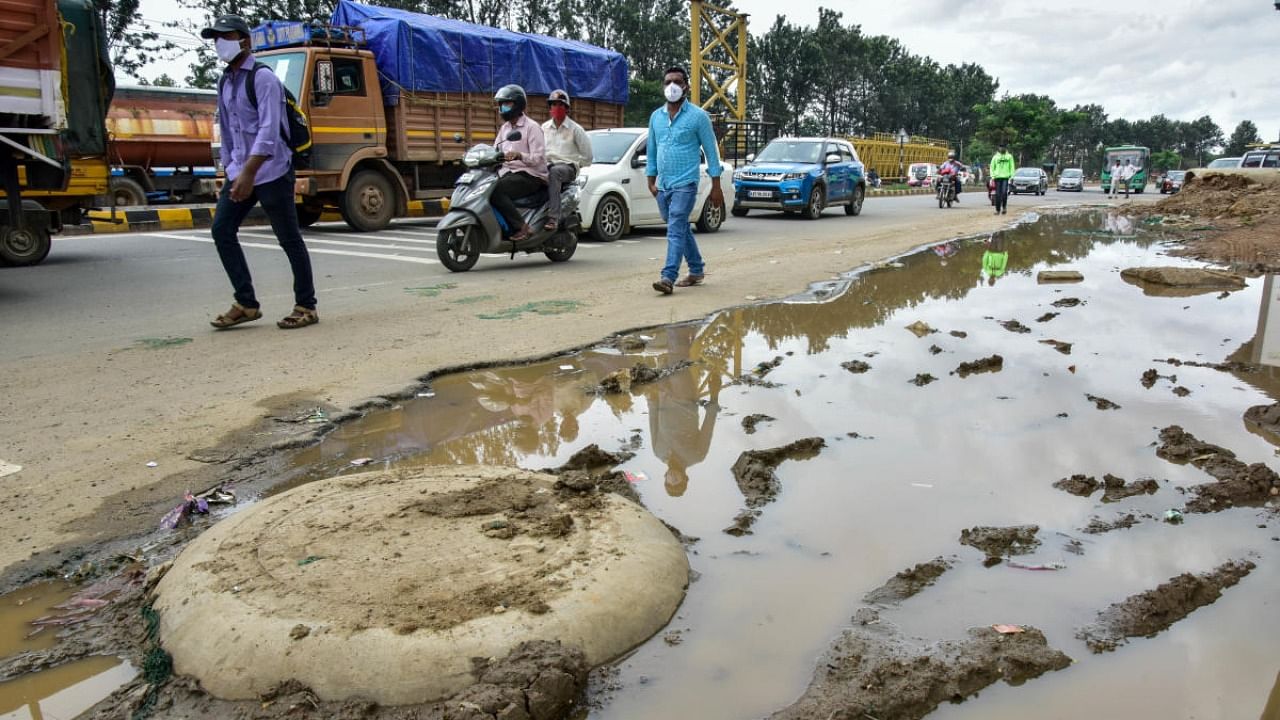
The BBMP’s effort to lay concrete roads may be promising a pothole-free carriageway, but it has come as a major concern for the traffic police who find it harder to provide traffic-calming measures like rumblers or surface markers.
At a panel discussion on challenges in enforcing the Motor Vehicle Act 2019, Joint Commissioner of Police (Traffic) B R Ravikanthe Gowda elucidated the issues brought about by road engineering.
Addressing a question on structural and remedial measures to enhance road safety in Bengaluru, Gowda pointed to last month’s road accident in Koramangala that claimed the lives of seven youths.
“It is a concrete road. The BBMP and other civic agencies constructing such roads are very happy with their work. We are insisting that they put traffic-calming measures like raised pedestrian crossings or even thick rumblers. They are now saying it is not possible,” he said.
Inadequate lighting during the night leads to several accidents and fatalities, Gowda said, especially pedestrians. “We studied pedestrian accidents and noticed that bad illumination caused about 80% of them,” he said.
Gowda urged fixing flaws in road engineering, adding: “Proper direction boards and road markings will reduce 20% to 30% of the accidents in Bengaluru. This input is based on the constables and head constables working on the field.”
Srinivas Alavilli, head of civic participation, Janaagraha, suggested decentralisation and public participation as ways to improve road safety measures. He said ward committees offer a common platform for the public and traffic police to explore solutions together.
The discussion was organised by Public Affairs Foundation in association with Consumer Unity and Trust Society.
K'taka to study TN measures on how to reduce road fatalities
Transport Commissioner N Shivakumar said the department was studying the trauma care measures adopted by Tamil Nadu that have proven effective in reducing road fatalities.
“The number of accident fatalities in Tamil Nadu have come down due to the setting up of emergency and trauma care as well as the systematic approach that has ensured swift help to those injured in accidents. We are studying these measures,” he said.
Gowda said although ambulances reach the spot in Bengaluru, the paramedics often are unsure how to handle the cases.
“The driver will take the injured to the hospital of his choice depending on the amount of commission he gets,” he said.
While a third of the accident fatalities are on-the-spot deaths, 10 to 15% of them die on the way to hospital, while about 50% die in hospital where trauma care could save them, said Dr Gururaj G, Karnataka Health Vision Group chairman and former dean of neurosciences at Nimhans.
"Tamil Nadu reduced the death rate by 10% not by constructing new hospitals. But instead by introducing basic measures like triage, placing a trauma nurse coordinator, trained staff in each hospital and establishing a referral system," he said.
Watch latest videos by DH here: